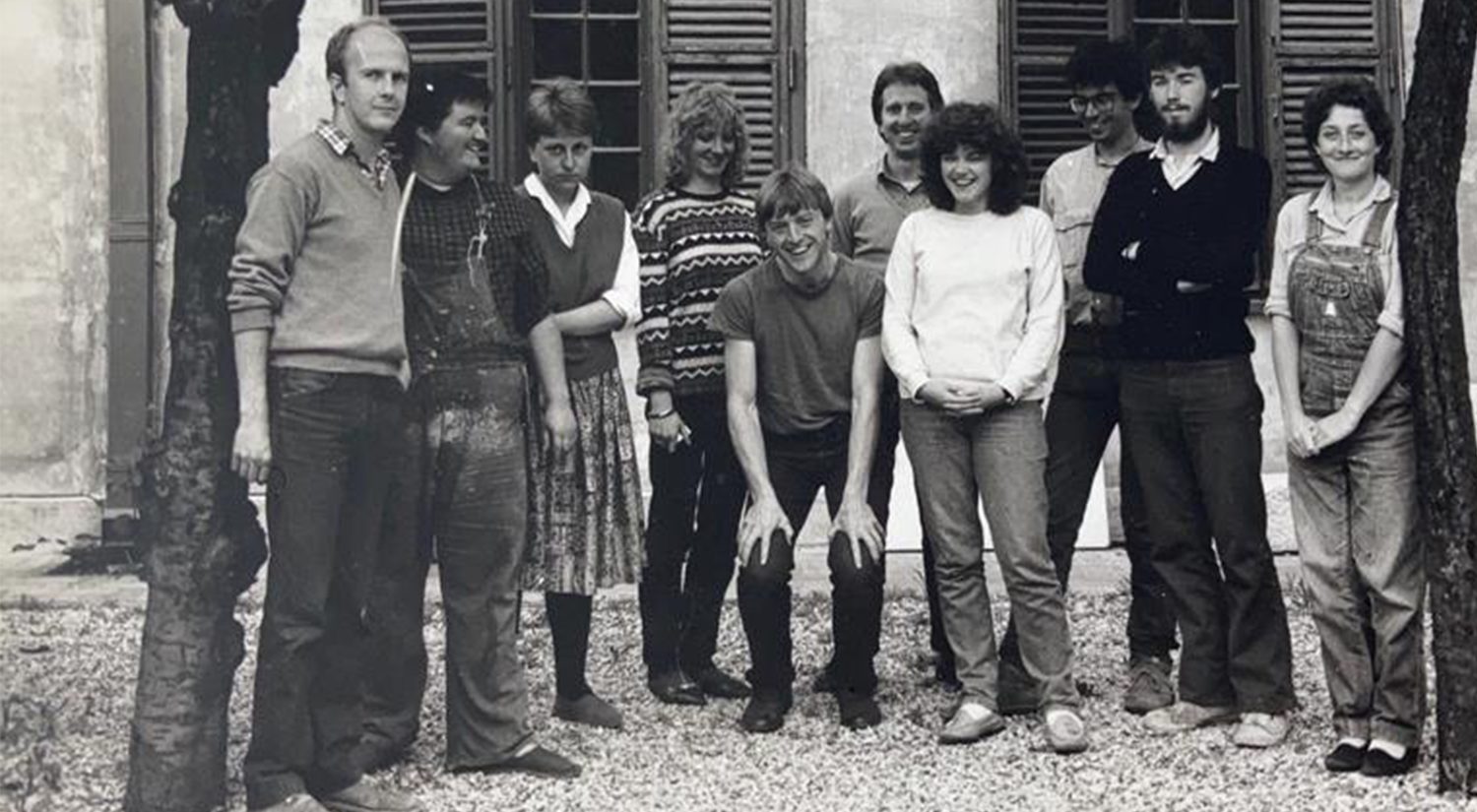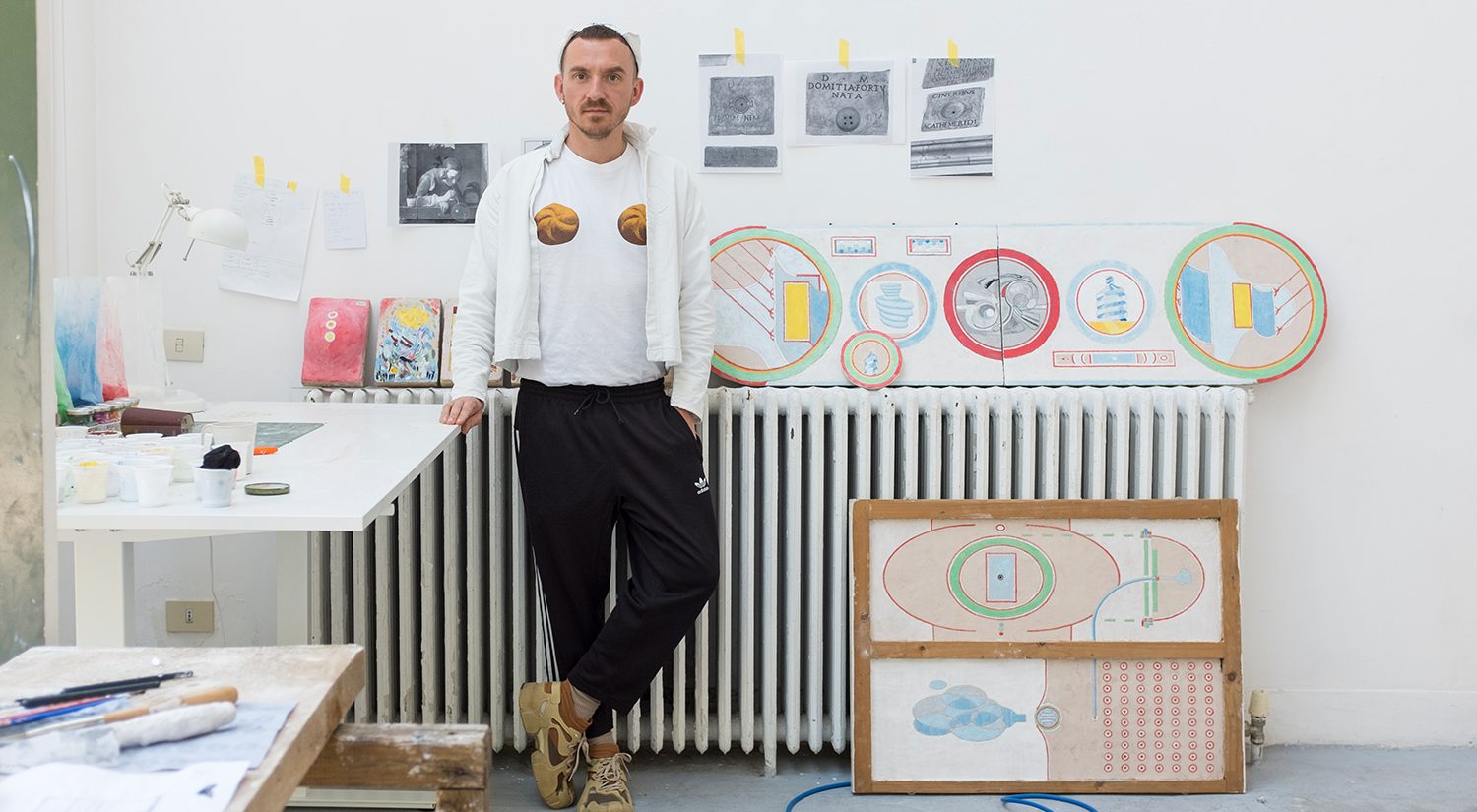An interview with Laura White, winner of The Ampersand Foundation Fellowship, in which she speaks about the work she has produced during her residency at the BSR from January – March 2023, ahead of the Winter Open Studios.
Your research on materiality of food continues, but you have been focusing also on two types of different stones: the precious Carrara marble, used by Gian Lorenzo Bernini in his sculptures and the humble basalt, used in blocks to make some streets of Rome. Is there a connection between these elements and the new experimentations in the dough of your sculptures?
I have a long time fascination with stone, having worked in this materials for a number of years when I was a young artist. Since being in Rome my interest in this material has been reignited, in particular my experience of walking on the sampietrini, the basalt cobblestones that guide and trip me up through the historical streets, and the sculptures of Gian Lorenzo Bernini, an artist/architect who pushed the capabilities of stone to the limits during the Renaissance period.
These two uses of stone could not be further apart in terms of how they are valued and viewed, one often overlooked and the other venerated, but as materials they are both extraordinary and beautiful, capturing history and reflecting the environment they are in. Spending time observing both I find myself pass beyond their forms to engage with their material qualities such as their strengths and weaknesses. Both stones capacity to be split, cut, carved and shaped, but also to break, crumble and discolour.

From the humble and utilitarian nature of the sampietrini, to the elevated sculptures of Bernini, Rome is full of these kinds of extreme material juxtaposition, antiquity colliding with the everyday wherever you turn. I observe this each time I walk into Piazza Navona, a man selling roasted chestnuts, behind him towers Bernini’s Fountain of the Four Rivers. The smouldering nuts break out of their hot shells resting in a large metal pan, Bernini’s travertine and marble sculpture washed over with water, dramatic and overbearing. The ephemeral meets the historical, both seductive, both important, both resilient, both vulnerable and both an intrinsic part of the city.
I’m interested in the collision of different materials and their associations. Bernini was quoted to have said he was “making stone as obedient to the hand as if it were dough.” This connection between the everyday material of dough and the valuable marble of Carrara, understood to both having unique material qualities. I’m interested in bringing these two materials into the same arena, manipulating dough beyond its familiar culinary use, but shaping it into folds, twisting it like fabric while been compelled and guided by its awkward material nature, not to be controlled or fixed, unlike stone!
Once I have mixed up my dough I intermittently fold in food colouring to create marbled veins running through the material. The dough then appears like precious stone, but also like aged meat marbled with white fat, or sections of mature cheese marbled with blue mold. I’m interested in the precarious similarities and divisions between materials. How values and histories connected to materials and the objects/forms that define them can be tested, and our assumptions and associations to them challenged.
To read Laura’s full text, ‘Stone – Sampietrini to Bernini’ go to https://tenderfoot.co.uk/rome/

In the past weeks you got in touch with Rachel Roddy, food writer and author based in Rome and Rebecca May Johnson, writer based in London. Have you got any plans for future collaborations together?
Before arriving in Rome I had read many of Rachel Roddy’s cook books. I read them from cover to cover like a novel, from her descriptions of the food markets in Rome, the people she encounters on her search for good quality and sustainable produce, to the lists of ingredients and method for her inventive recipes. My approach to writing is similar in that we both have a direct way of describing our experiences and encounters with food, no frills attached! Rebecca May Johnson, also a food writer and who knows Rachel very well has a similar straight forward approach to her writing, so when the three of us met in Rome at Rachel’s home, we immediately felt comfortable and relaxed to share in our experiences.
All three of us having a fascination with food; even though coming to it from different places in different ways; made for the conversation and the collaboration of cooking together very natural, relaxing and exciting.
Our conversations cut across themes such as the agency of ingredients, our personal food histories, the markets we visited that week, to also what TV programmes we like to watch while eating! We made tortellini together, learning from each other different approaches of filling, shaping and folding the pasta. A non-linguistic speech of the body communicated across the kitchen table as we past ingredients and kitchen tools to each other. We have different audiences for the things we create – books, blogs, sculpture… but we each are passionate about food and handling it.

These conversations around food we continue to nurture, and will be coming together for a live event at the British School at Rome in June where we will each give a short presentation about our practices, and then have a conversation around our relationship to food, unpacking the similar and different approaches we take. I hope this three way conversation will continue beyond my fellowship here in Rome, as like good food, it takes time to understand and evolve unique and valuable relationships.
Laura’s writing and fieldwork go to www.tenderfoot.co.uk
Laura’s artwork go to www.laura-white.co.uk











